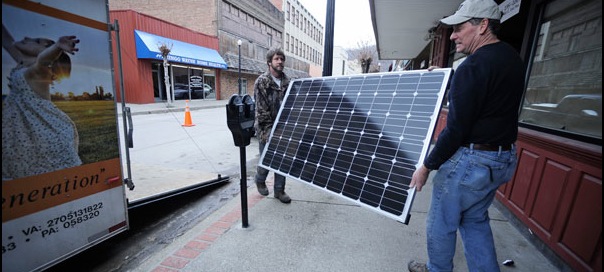States Take Lead in Defining Green Jobs

Green jobs are among the most controversial topic in America’s clean energy economy. Confusion over what exactly makes a job green has created disagreement over the total number of existing and potential green jobs, but efforts in several states are helping define the sector, track its growth, and connect job seekers to employers.
Land of 10,000 Green Jobs
Late last week, Minnesota released the Emerging Green Economy: Green Jobs Report 2011, a two-year study on green jobs in the state. The study was funded through a $1.6 million federal stimulus grant and examined job descriptions at thousands of companies to strictly define the sector.
According to the study, a green job is one directly related to and/or essential to a green product, service, or process in which workers spend at least 50 percent of their time working on the job. Eligible sectors include renewable energy or alternative fuels; energy and/or resource efficiency; environmental cleanup, sustainable agriculture or natural resource conservation; or environmental education, regulation, compliance, or research.
This strict definition identified a small but steadily growing green sector of about 2.5 percent of the state’s total job openings across 150 occupations, or 65,000 jobs out of 2.6 million jobs statewide. More than half the jobs were in construction and manufacturing, with the highest demand in engineering and science.
Minnesota may have created the clearest definition to date, but theirs wasn’t the first. The New York State Green Jobs Study, released in November 2011 by the New York State and City labor departments, documented the percentage of green jobs within existing industries.
Empire State of Mind
New York’s study broadly defined green jobs. First, “green economic activities produce goods or deliver services that increase energy efficiency or generate renewable energy.” Second, “green employers are engaged in a targeted green economic activity.” And, third, “green employees are primarily engaged in producing green products or delivering green services.”
In New York, as in Minnesota, a majority of green jobs were in construction and retrofits. Within existing industries, 34 percent of all construction trades, 31 percent of all building services, 23 percent of all professional services, and 7 percent of all component manufacturing jobs were considered green.
These percentages may seem small, but are expected to grow – a significant number of companies with green employment said they’d have more similar positions in a year. Interestingly, respondents said familiarity with the U.S. Green Building Council’s LEED process was the most sought-after skill set for potential employees.
Hawaii Gold
So, beyond accurately tracking job growth and attractive skills, how can states apply this green jobs knowledge? Perhaps the most valuable application is seen in Hawaii, which recently launched a Green Jobs Directory.
The state surveyed businesses in 2010 and found just over 11,000 green jobs, about 2.4 percent of total state employment across 203 occupations. As part of the survey, Hawaii defined green jobs as those that generate clean, renewable, sustainable energy; reduce pollution and waste, conserve natural resources or recycle; increase energy efficiency; educate, train or support green workers; and engage in sustainable production.
Once defined, the state created an online directory that lists companies with green jobs in their employment and made it free for interested job seekers. The directory not only connects green employers with qualified applicants, but it will also provide an accurate assessment of sector growth over time.
You can return to the main Market News page, or press the Back button on your browser.

